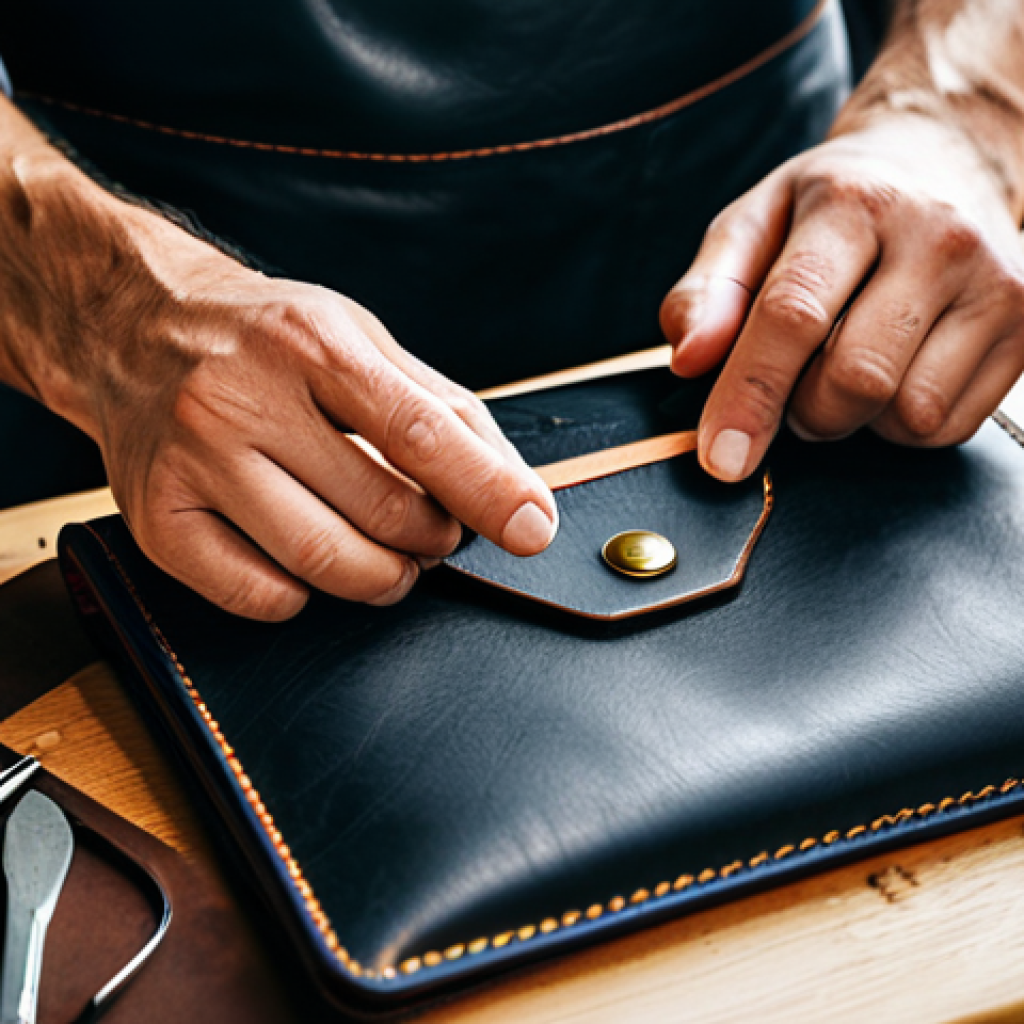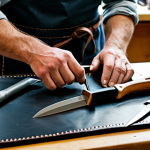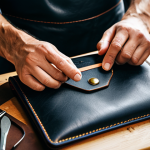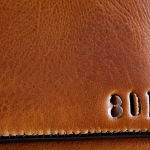There’s something truly magical about holding a piece of handcrafted leather, isn’t there? That rich scent, the supple feel, the way it whispers stories of artistry.
But what truly transforms a beautiful piece into a *brand* statement, something uniquely yours or your customer’s, is often that final, perfect touch: the logo.
From my own experience running a small leather goods venture, I’ve seen firsthand how a crisply embossed logo elevates a simple wallet or bag from ‘just another item’ to a cherished keepsake, a symbol of quality and identity.
In today’s highly personalized market, where every detail screams ‘you,’ precise branding isn’t just an option—it’s the cornerstone of connecting with your audience and standing out from the crowd.
Let’s explore exactly what that means for your brand, and why understanding this crucial detail could reshape your entire approach.
There’s something truly magical about holding a piece of handcrafted leather, isn’t there? That rich scent, the supple feel, the way it whispers stories of artistry.
But what truly transforms a beautiful piece into a *brand* statement, something uniquely yours or your customer’s, is often that final, perfect touch: the logo.
From my own experience running a small leather goods venture, I’ve seen firsthand how a crisply embossed logo elevates a simple wallet or bag from ‘just another item’ to a cherished keepsake, a symbol of quality and identity.
In today’s highly personalized market, where every detail screams ‘you,’ precise branding isn’t just an option—it’s the cornerstone of connecting with your audience and standing out from the crowd.
Let’s explore exactly what that means for your brand, and why understanding this crucial detail could reshape your entire approach.
The Unseen Power of a Mark: Why Your Logo Matters More Than You Think
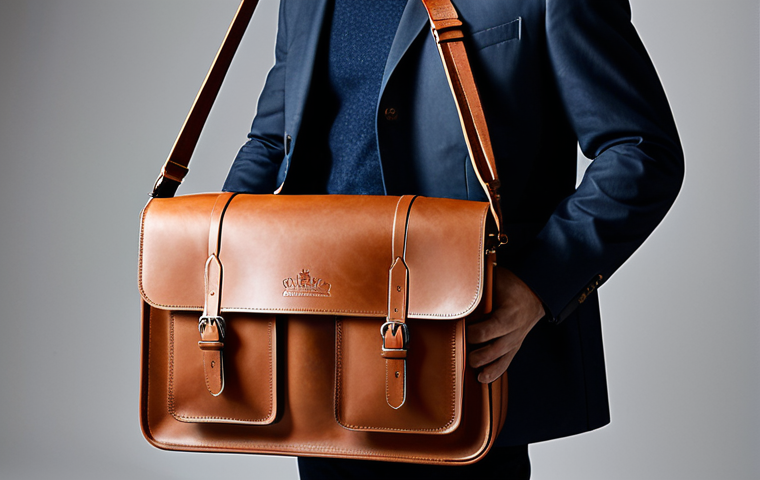
I remember when I first started my leather crafting journey, I was so focused on the stitching, the edge finishing, the perfect cut – all the tangible aspects of creation. The logo felt almost like an afterthought, a final stamp to tick a box. Oh, how wrong I was! What I quickly learned, through countless customer interactions and feedback, is that the logo is far more than just a pretty design. It’s the silent ambassador of your brand, whispering promises of quality, heritage, and the care that went into every single stitch. It’s the visual shorthand for all the blood, sweat, and tears you pour into your craft. When a customer picks up a piece, that mark instantly communicates professionalism and an attention to detail that sets you apart from mass-produced items. It’s a trust signal, telling them, “Yes, this was made with intention, and by someone who stands behind their work.” For me, personally, seeing my own logo on a finished product isn’t just pride; it’s a profound sense of identity and commitment to every piece that leaves my workshop. It truly transforms an object into an experience.
More Than Just a Design: Branding as a Silent Salesperson
Think about it: in a bustling marketplace, online or off, how do you instantly convey value and authenticity? Your logo does that heavy lifting. It’s not just about aesthetics; it’s about making an immediate, subconscious connection. When I started integrating my logo consistently and beautifully, I noticed a palpable shift. Customers weren’t just buying a wallet; they were buying *my* wallet, with *my* mark of quality. This subtle but powerful shift is the essence of effective branding. That small, often understated, mark becomes a testament to your entire process, your material choices, and your dedication. It silently assures the buyer that they are investing in something genuine, something crafted with passion, not simply manufactured. It builds a narrative around your product that no amount of written description can fully capture.
The Emotional Connection: Building Loyalty Through Recognition
There’s a real emotional attachment that forms when a customer recognizes and trusts a brand. That’s why I pour so much care into making sure my logo is always perfectly applied. It’s not just about stamping; it’s about forging a bond. When someone sees that familiar mark, whether it’s on a piece they own or a new item they’re considering, it triggers a memory, an experience, or a perception of quality. My customers often tell me they feel a sense of pride carrying an item with my specific branding because they associate it with reliability and personal touch. This isn’t just about making a sale; it’s about fostering a community, creating repeat customers who don’t just buy your products, but advocate for your brand. It’s the foundation of true, lasting loyalty in a crowded market.
Crafting Identity: The Journey from Concept to Embossment
The journey from a digital concept of your logo to a tangible, beautiful impression on leather is far more intricate than it might seem at first glance. I remember my very first logo design. It was overly complex, with too many fine lines and tiny details that looked fantastic on a screen but simply couldn’t translate well onto leather. It was a harsh but necessary lesson: a good leather logo needs to be designed with the medium in mind. You need to consider how the material will react to pressure, heat, or laser. Will those delicate serifs disappear? Will that intricate pattern muddy into an indistinct blob? My own early attempts taught me that simplicity and clarity are often your best friends in leather branding. It’s not just about what looks good, but what *performs* well under the unique stresses of the branding process. This understanding completely shifted my design philosophy, pushing me towards bolder, cleaner lines that would faithfully represent my brand every single time.
Designing for Leather: What Works, What Doesn’t
When you’re designing a logo specifically for leather, you have to think about the physical impression it will make, not just its visual appearance. Fine details, gradients, and intricate typography often get lost or become muddy when debossed or hot stamped. For my own brand, I moved towards a more minimalist design that featured strong, clear lines and easily readable text. This approach ensures that whether it’s a subtle deboss or a prominent foil stamp, the integrity of the design remains intact. I’ve found that bold, geometric shapes or clean, sans-serif fonts tend to translate beautifully, creating a crisp, professional look that lasts. Avoiding super thin lines or excessive small text is crucial, as these can easily blur or even damage the leather during the branding process. It’s a delicate balance of art and engineering.
From Digital to Tangible: Partnering with the Right Embosser
Once your design is perfected, the next critical step is finding the right partner to create your branding tools, be it a custom stamp for hot stamping or a vector file for laser engraving. This is not a decision to take lightly. I once went with the cheapest option available online, and the resulting stamp was shallow and inconsistent, leaving a weak impression that did my brand no favors. The difference was night and day when I invested in a reputable, experienced stamp maker. They understood the nuances of the materials, advising on plate thickness, beveling, and even the best metal for longevity. A high-quality stamp ensures a sharp, consistent impression every single time, saving you material and frustration in the long run. My advice from personal experience: treat your stamp maker as a crucial partner in your branding journey, not just a vendor.
Beyond Aesthetics: How a Well-Placed Logo Builds Trust and Value
I’ve seen it happen countless times: a potential customer picks up one of my unbranded leather pieces, admires the craftsmanship, but then places it back. Moments later, they pick up an identical piece, but this time it has my distinctive logo subtly debossed. Suddenly, their eyes light up, and their grip tightens with a newfound appreciation. This isn’t just imagination; it’s the undeniable power of a well-applied brand mark. That logo isn’t just a decoration; it’s a silent certification of authenticity and quality. It tells a story of origin, of care, and of the maker’s confidence in their product. It transforms a generic item into a branded product, immediately elevating its perceived value. I’ve learned that people are willing to pay a premium not just for the material or the labor, but for the assurance that comes with a trusted name or mark. This isn’t about being arrogant; it’s about instilling confidence and building a connection that resonates deeply with the customer’s desire for quality and genuine craftsmanship.
The Mark of Authenticity: Distinguishing Craft from Commodity
In a world flooded with mass-produced goods, an authentic logo on handcrafted leather is like a beacon of integrity. It’s the fingerprint of the artisan, a testament to the fact that this item was not churned out on an assembly line. I’ve heard customers express relief, almost, when they see my logo. It reassures them that they’re investing in something real, something that holds a story and a soul, rather than just another disposable item. This authenticity fosters a sense of trust that transcends the transaction itself, building a loyal customer base who value not just the product, but the values it represents. It sets your unique, handcrafted piece miles apart from a generic, unbranded commodity found on a discount shelf.
Perceived Value: Elevating Your Product in the Customer’s Eye
It’s fascinating how a simple logo can completely change a customer’s perception of value. I’ve experimented with this, putting out identical items, some branded and some not. Without fail, the branded items consistently attracted more attention and were perceived as higher quality, even if the craftsmanship was exactly the same. The logo acts as a visual seal of approval, a sign that the maker stands behind their work, boosting confidence in the purchase. This isn’t about tricking anyone; it’s about clearly communicating the inherent value and quality that you’ve poured into your product. It transforms a mere object into a desirable, premium item, justifying a higher price point and ultimately leading to greater profitability and brand recognition.
The Tangible Touch: Exploring Different Branding Techniques for Leather
When I first started out, I honestly thought “branding” just meant stamping a logo. Boy, was I naive! As I delved deeper into the world of leather craft, I discovered an incredible array of techniques, each with its own unique character, challenges, and aesthetic appeal. From the classic elegance of a debossed mark to the crisp modern lines of laser engraving, choosing the right method is crucial to how your brand is perceived. My journey involved a lot of trial and error, experimenting with different types of presses, various foils, and even borrowing a friend’s laser engraver to see what results I could achieve on different leather types. Each method brought its own set of triumphs and frustrations, and I quickly learned that what works perfectly for one type of leather or brand aesthetic might be a complete disaster for another. It’s truly an art form in itself, matching the branding technique to the soul of your product.
Hot Stamping & Debossing: The Classic, Elegant Choice
For me, nothing beats the timeless elegance of hot stamping or debossing. This is where a heated metal die (your logo!) is pressed into the leather, creating a permanent, indented impression. Debossing simply leaves a depressed mark, while hot stamping can incorporate foil for a metallic or colored effect. I personally lean towards a clean, deep deboss for a subtle, sophisticated look that ages beautifully with the leather. The tactile nature of a debossed logo just screams quality. My early attempts with hot stamping involved a lot of burnt fingers and uneven presses, but with practice and a good machine, the results are incredibly satisfying. The key is consistent heat and pressure, and a stamp that’s been perfectly crafted for your specific leather type. It’s a method that truly celebrates the material, allowing the leather itself to create the texture of your brand.
Laser Engraving & Beyond: Modern Approaches for Unique Effects
While I adore the traditional methods, I’ve also experimented with laser engraving, and it offers a distinct, modern aesthetic. Laser engraving uses a focused beam of light to burn or etch the surface of the leather, creating a very precise, often dark, mark. It’s fantastic for intricate designs that might be too delicate for traditional stamping. I’ve used it for a few special edition pieces where I wanted a very sharp, almost photographic detail. The downside? Sometimes it can feel less “integrated” into the leather than a deboss, and the smell of burnt leather can be quite strong! Beyond these, there’s also branding irons for a rustic, burnt-in look, and even custom leather printing for full-color designs. Each offers a unique way to tell your brand’s story, allowing you to tailor the method to your specific product and target audience.
| Branding Method | Key Characteristics | Pros | Cons | Best For |
|---|---|---|---|---|
| Hot Stamping/Debossing | Uses heated metal die to indent leather. Can add foil for color. | Classic, elegant, tactile. Durable, ages well with leather. | Requires custom die. Can be inconsistent without proper equipment/technique. Limited detail. | High-end goods, subtle branding, timeless appeal. |
| Laser Engraving | Uses focused laser to etch/burn leather surface. | High detail, precision, versatile for complex designs. No physical die needed. | Can smell of burnt leather. May not feel as integrated. Color varies by leather. | Intricate designs, modern aesthetic, quick prototyping. |
| Branding Iron | Heated metal rod applies mark through direct contact. | Rustic, “burnt” aesthetic. Very durable. | Can be difficult to control heat and pressure, leading to inconsistent burns or damage. | Rustic, rugged leather goods, vintage-inspired brands. |
| Leather Printing (UV/Inkjet) | Applies ink directly onto the leather surface. | Full color, high detail, photographic quality. | Ink can scratch/wear off over time. May not feel as “authentic” to some. | Fashion items, graphic designs, intricate color work. |
Protecting Your Legacy: Ensuring Durability and Longevity of Your Mark
It’s one thing to apply a beautiful logo; it’s another to ensure it stands the test of time, just like the leather itself. I’ve personally experienced the heartbreak of seeing a client’s cherished wallet, only to notice that my carefully applied logo had faded or become less distinct over the years. It truly hit home that the durability of your brand mark is just as important as the durability of the leather product it adorns. This realization led me down a rabbit hole of research and experimentation, trying to understand how different leather types react to various branding techniques, and what post-branding care is essential. It’s a continuous learning process, but ensuring your logo remains a clear, proud statement of your brand’s quality is paramount to its long-term success and customer satisfaction. After all, your logo is your promise, and a fading promise is not a good look.
Material Matters: How Leather Type Influences Branding Outcomes
Not all leathers are created equal when it comes to branding. I’ve found that vegetable-tanned leather, with its dense structure, takes a deboss incredibly well, often producing a crisp, deep impression that holds beautifully. Chrome-tanned leathers, which are softer and more pliable, can be a bit trickier. They might not hold as sharp an impression, and hot stamping requires careful temperature control to avoid scorching or melting the surface. I once ruined a perfectly good piece of soft lambskin trying to apply too much heat, a mistake I certainly won’t repeat! It’s crucial to test your branding method on a scrap piece of the exact leather you’ll be using before committing to your final product. Understanding the nuances of each leather type—its density, finish, and fat content—is absolutely essential for a successful, lasting brand application. This pre-testing phase has saved me countless hours and wasted materials.
Post-Branding Care: Maintaining the Integrity of Your Mark
Even after a perfect application, a logo can be susceptible to wear and tear, especially if the product is used daily. I always educate my customers on proper leather care, and part of that conversation includes how to protect the branded areas. For debossed marks, avoiding harsh abrasives and chemical cleaners is key, as these can dull the impression or even damage the leather around it. For foil-stamped logos, being mindful of friction (like carrying keys in the same pocket) helps prevent the foil from flaking or rubbing off prematurely. I’ve found that applying a good quality leather conditioner, gently buffed into the surface, not only protects the leather but can also help preserve the clarity of the branded mark over time. It’s about ensuring that your brand’s presence endures, just like the quality of your craft.
Strategic Placement: Maximizing Impact and Customer Engagement
Where you put your logo on a leather product is almost as important as the logo itself. This isn’t just about sticking it anywhere; it’s a strategic decision that impacts everything from perceived value to brand recall. I remember when I started, I just slapped my logo on the most obvious spot, usually the front. While that’s fine for some products, I quickly learned that different items, different brand aesthetics, and even different customer preferences call for varied approaches. Is your brand about bold statements or understated luxury? Is the product’s primary function best served by a discreet interior mark, or does it demand a prominent exterior display? My own experimentation, and paying close attention to how customers interacted with my branded products, taught me that strategic placement can dramatically enhance the customer’s experience and deepen their connection to your brand. It’s about finding that sweet spot where the logo complements, rather than competes with, the beauty of the leather item.
The Prime Real Estate: Where to Place Your Logo for Maximum Visibility
For items like wallets, cardholders, or bags, there’s always a “prime real estate” for your logo. On a wallet, it might be a subtle deboss on the interior right panel, or a more prominent hot stamp on the exterior lower corner. For a bag, the front bottom-right, or even a branded leather tag, often catches the eye. I’ve found that for everyday carry items, a location that’s visible during use but not overly obtrusive tends to work best. My personal preference often leans towards internal branding for items like wallets and passport holders; it feels like a little secret, a mark of quality discovered by the user, which adds a layer of intimacy and exclusivity to the product. For other items, a more external placement helps with brand recognition when carried in public, acting as a walking advertisement for your craftsmanship.
Subtlety vs. Boldness: Matching Placement to Your Brand’s Vibe
The decision between a subtle or bold logo placement directly reflects your brand’s personality. Is your brand known for understated elegance, where quality speaks for itself? Then a discreet, debossed logo on the inside of a wallet or on the back of a bag might be perfect. It whispers quality rather than shouts it. If your brand is about bold, contemporary design and wants to make a strong statement, then a larger, foil-stamped logo on the front of an item might be more appropriate. I’ve found that aligning the logo’s visibility with your overall brand aesthetic is crucial. A mismatch can create confusion or dilute your brand message. My journey involved a lot of self-reflection about what I wanted my brand to communicate. The placement of your logo isn’t just an afterthought; it’s a deliberate choice that reinforces your brand’s identity and speaks volumes to your target audience before they even touch the product.
The Cost of Distinction: Understanding the Investment in Premium Branding
When you first start out, the cost of custom branding tools – a bespoke hot stamp, a specialized press, or even high-quality foils – can feel like a significant hurdle. I remember looking at the quotes for my first custom stamp and thinking, “Is this *really* worth it?” It felt like a luxury, an added expense rather than a necessity. However, through personal experience and seeing the tangible impact on sales and customer perception, I can now confidently say it’s not an expense; it’s one of the most vital investments you can make in your leather crafting business. This isn’t just about adding a pretty stamp; it’s about embedding your brand’s DNA directly into every product, creating a perception of quality and authenticity that drives customer loyalty and justifies premium pricing. The initial outlay might sting a little, but the long-term returns, in terms of brand recognition and customer trust, are immeasurable. It’s about building a legacy, not just making a product.
Beyond the Initial Stamp: Hidden Costs and Long-Term Value
While the cost of the custom stamp itself is the most obvious, there are other considerations. Investing in a reliable hot stamping machine, for example, is crucial. My first cheap press was inconsistent and frustrating, leading to wasted leather and time. Upgrading to a more robust, professional-grade machine dramatically improved the quality and consistency of my branding, ultimately saving me money in the long run by reducing errors. Then there are the foils, if you choose that route—they come in various colors and finishes, and quality matters. Don’t forget the practice pieces; you’ll use a fair amount of scrap leather refining your technique. All these elements contribute to the true cost of branding. But what I’ve learned is that each of these “costs” is an investment in quality control, brand integrity, and ultimately, your business’s reputation. It’s about minimizing future headaches and maximizing customer satisfaction from the get-go.
ROI of Branding: When the Investment Truly Pays Off
The return on investment (ROI) for premium branding isn’t always immediately apparent in a simple dollar figure, but it becomes incredibly clear over time. For me, the payoff was evident in a few key areas: increased customer loyalty, a higher perceived value for my products (allowing me to maintain healthy profit margins), and a significant boost in brand recognition through word-of-mouth. When your products look professional and high-end because of that crisp, consistent logo, customers are more likely to share their purchases, tag you on social media, and recommend you to friends. That organic marketing is priceless. Furthermore, a strong brand reduces the need to compete solely on price, as customers are buying into your unique story and quality. My journey has shown me that investing in your brand mark is not just about making your products look good; it’s about building a sustainable, respected business that stands out in a competitive market.
Concluding Thoughts
As I reflect on my own journey in leather crafting, it becomes clear that branding isn’t just about a pretty mark; it’s the very soul of your product, the silent promise of quality, and the bridge connecting you to your customer. It’s an ongoing process of refinement, of understanding your materials, and of consistently delivering on the promise your logo represents. Embrace this journey not as a chore, but as an integral part of your craft, allowing your unique identity to shine through every stitch and every carefully placed mark. May your brand stand strong, telling its story for years to come, just like a beautifully aged piece of leather.
Useful Information to Know
1. Always conduct test runs on scrap leather, especially when experimenting with new techniques or types of leather. This saves valuable material and prevents costly mistakes.
2. Simplicity often reigns supreme in leather logo design. Overly intricate details can get lost or blur, so opt for clean lines and clear typography that translate well onto a physical medium.
3. Invest in quality branding tools. A cheap stamp or an unreliable press can lead to inconsistent results and endless frustration. It’s a foundational investment for consistent, professional branding.
4. Consider the end-use of your product when choosing a branding method and placement. A wallet that sees daily abuse might benefit from a deboss over a delicate foil stamp to ensure longevity.
5. Educate your customers on how to care for their branded leather items. Proper maintenance ensures the logo remains crisp and clear, reinforcing the quality and longevity of your brand.
Key Takeaways
Your logo is far more than just a design; it’s a powerful brand ambassador that builds trust, communicates quality, and transforms a product into an experience. Thoughtful design, specifically tailored for leather, is crucial, prioritizing clarity and impact over complexity. Partnering with reputable stamp makers and understanding different branding techniques (like hot stamping, debossing, or laser engraving) are vital steps in achieving a professional finish. Strategic placement of your mark can maximize its visibility and emotional connection with customers, while ensuring its durability protects your brand’s legacy. Finally, view the cost of premium branding as a strategic investment, yielding significant ROI through increased perceived value, customer loyalty, and ultimately, a sustainable and respected business.
Frequently Asked Questions (FAQ) 📖
Q: Why is a crisply embossed logo so important for a handcrafted leather product, beyond just looking nice?
A: Oh, this is something I learned the hard way when I first started out. It’s so much more than just a visual flourish. Think about it: when you pick up a piece of leather, your senses are immediately engaged – the smell, the feel.
That logo, when it’s perfectly embossed, becomes part of that tactile experience. It’s not just printed on the surface; it’s literally etched into the material, creating a permanent mark of authenticity.
For me, it became clear that it’s a silent but powerful handshake, a guarantee that someone meticulously crafted this. It elevates a simple item from something you might find anywhere to a piece that truly carries the maker’s pride and identity.
It makes people feel like they’re holding something of true value, a piece of artistry, not just another wallet or bag.
Q: How does a precise logo truly help a brand stand out in today’s incredibly personalized and crowded market?
A: In a world absolutely saturated with options, your logo isn’t just about recognition; it’s about connection. I’ve personally seen it happen at pop-up markets and online.
When customers are sifting through countless items, a distinct, well-placed logo acts as a magnetic pull. It’s your brand’s unique signature, telling a story before a single word is spoken.
For instance, when someone sees my embossed logo, it’s not just a pretty design; it immediately evokes the feeling of quality, the hours I poured into selecting that leather, and the care taken in its creation.
In a market where everyone wants something “just for them,” a logo makes your product feel tailored, special. It transforms a functional item into a personal statement, a piece of someone’s own identity that they want to align with.
It’s about building a tribe around your craftsmanship.
Q: What kind of tangible impact can a strong, well-executed logo have on the business side of a leather goods venture?
A: The practical impact is, honestly, immense. I’ve seen it firsthand in terms of both customer perception and repeat business. Firstly, a great logo dramatically boosts perceived value.
People are willing to pay a premium for quality and authenticity, and that logo is your visual promise of both. It’s like a seal of approval, reassuring them they’re making a smart investment.
I’ve noticed customers are far more likely to choose my branded pieces over unbranded, cheaper alternatives, even if the craftsmanship is similar. Secondly, it drives loyalty and word-of-mouth.
When someone loves a branded item, they don’t just own a bag; they own your brand. My heart just swells when I see a customer pull out their wallet with my logo on it, then enthusiastically tell their friend about where they got it.
That consistent, professional branding makes it easy for them to share their positive experience, directly leading to new customers who are already half-convinced before they even see the product.
It’s not just art; it’s a smart business move that pays dividends.
📚 References
Wikipedia Encyclopedia
구글 검색 결과
구글 검색 결과
구글 검색 결과
구글 검색 결과
구글 검색 결과
